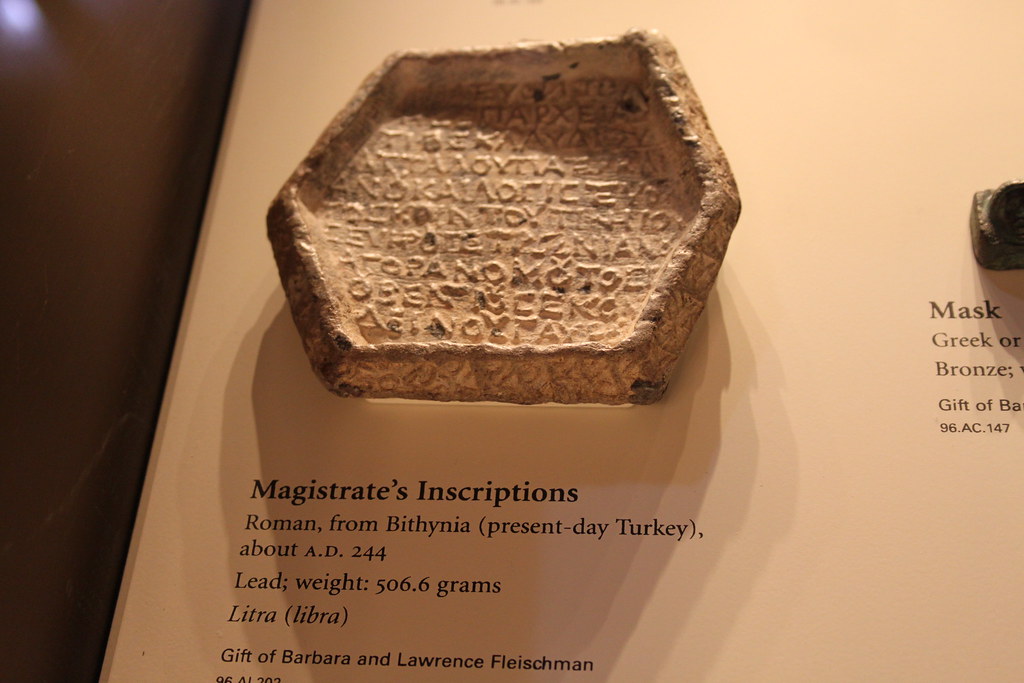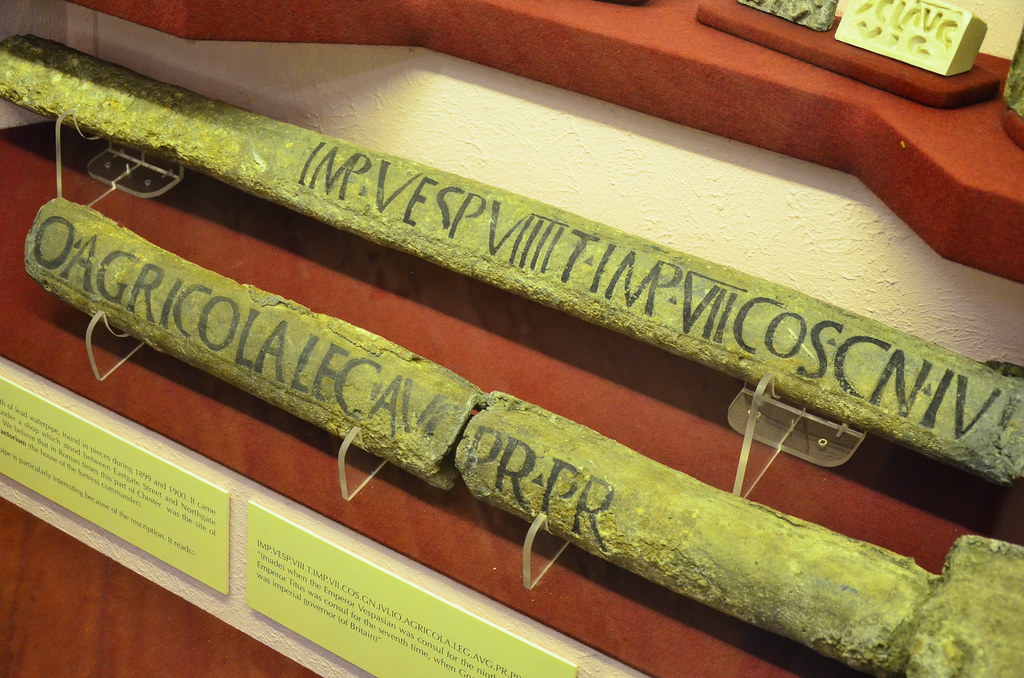The name of this metal comes from the Latin “Plumbum”. Commonly known as Lead, it played an important role in industrial and scientific progress.
Its properties made it one of the most used metals in the industry in the Greek and Roman eras.

Image source: https://search.creativecommons.org/photos/a9b7bc02-b876-4549-ac6d-babee4b40c1c by None, Wendy Scott, 2008
What is plumbum?
Commonly known as Lead, Plumbum is a chemical element whose atomic number 82 and symbol is Pb. It belongs to the 14th Group and the 6th period of the table of elements.
It is a soft metal, heavy and malleable. It has a natural bluish-white color or dark gray color when exposed to air.
It was discovered in ancient times (in Anatolia were found lead beads dating to 6500 BC).

Image source: https://search.creativecommons.org/photos/53cceda8-1610-4aef-89d7-b07bf7713756 by Gary Lee Todd, Ph.D.
Lead mining in ancient times
The main lead production centers in the ancient world were in Attica (mines of Laurion piomboargentifero), Macedonia, Cyprus, Rhodes, Gaul, Britain (where according to reports Pliny he produced in such abundance that a law prohibiting more than a certain amount fabricate), in southern Spain, in Africa, in Etruria, in Sardinia, the island of Elba, Capraia, the Balearics, the Cassiteriti islands. In Roman times, the silver-bearing lead mines of Cartagena occupied forty thousand slaves. After its extraction and processing, lead was put on the market in bars and ingots and marked with the workshop brand or emperor names, prosecutors, or private. Lead and silver are usually obtained from the fusion of galena (Mineral composed of lead sulfide).

Image source: https://search.creativecommons.org/photos/95284c71-d1cf-42a8-8e31-123d4d92ae03 by Ben Sutherland
The roasting transformed the galena, in litharge and lead sulfate. While with the fusion, the lead is obtained when the desulphurization degree is reached. The treatment was performed in primitive ovens built of clay and stones. In Britain, the ovens were built on the hillsides to use the prevailing winds for the draw. The crude lead, called plumbum, contained from 45 to 80 ounces of silver per ton.

Image source: https://search.creativecommons.org/photos/e77e3494-4cfe-49f5-a418-97ffec8a7532 by Nanosanchez
Plumbing in ancient rome
The lead was used for different purposes. Lead roof coverage goes back to ancient times: a notable example was the palace of Constantinople, built by Emperor Constantine. Other uses of lead are roof gutters and black wells.
Thanks to the resistance to corrosion and its flexibility, it has been widely used for hydraulic works and the construction of buildings and ships. Its low melting point made it a great welding material. Moreover, in many cultures, alone or as an alloy, it was used to mint coins. The lead employment in the artistic field was always limited and circumscribed mostly to minor crafts due to processing difficulties.
One of the most important historical applications of lead was Roman water pipes. Lead pipes were fabricated in 3-meter (10-foot) lengths and as many as 15 standard diameters. Many of these pipes, still in excellent condition, have been uncovered in modern-day Rome and England. The Roman word plumbum, denoting lead water spouts and connectors, originated the English word plumbing and element symbol Pb.
Plumbing in ancient rome
Marcus Vitruvius Pollio, a 1st-century-BCE Roman architect and engineer, warned about the use of lead pipes for conveying water, recommending that clay pipes should be used instead. Vitruvius also referred in his writing to the poor color of the workers in lead factories, noting that the fumes from molten lead destroy the “vigor of the blood.”
On the other hand, many believed that lead had favorable medical qualities. Pliny, a Roman scholar of the 1st century, wrote that lead could be used for scar removal, as a liniment, or as an ingredient in plasters for ulcers and the eyes, among other health applications.

Image source: https://search.creativecommons.org/photos/95f395c8-84e4-4744-8160-a074489607a8
How was lead used throughout history?
Many churches and major buildings constructed in the 15th and 16th centuries provide examples of lead employed as a roofing material and for water conveyance. Indeed, the stained-glass windows of many cathedrals and castles of this period were made possible by using lead to hold glass elements together in a magnificent unity of colors and shapes.

Image source: https://en.wikipedia.org/wiki/Lead#/media/File:Evolution_production_plomb.svg
In 1859 a French physicist, Gaston Planté, discovered that pairs of lead oxide and lead metal electrodes, when immersed in a sulfuric acid electrolyte, generated electrical energy and could be subsequently recharged. A series of further technical improvements led to the commercial production of lead-acid batteries in 1889. The enormous growth of battery markets in the 20th century (eventually consuming about 75% of the world’s lead production) has largely paralleled the rise of the automobile, where batteries have found the application for starting, lighting, and ignition.
Another important lead product was tetraethyl lead: a gasoline additive invented in 1921 in the United States to solve “knocking” problems that had become common with the development of high-compression engines operating at high temperatures. Fifty years later, the use of this lead compound has declined, as the installation of catalytic converters has become mandatory in American passenger cars’ exhaust systems.
At the beginning of the 21st century, China was a world leader in primary and secondary refining of lead. Other major refiners include the United States, the United Kingdom, Germany, and India.

Image source: https://search.creativecommons.org/photos/f7d7d30e-83cc-425d-865a-0fee31d77f51 by Public Domain Photos
Info sources:
https://en.wikipedia.org/wiki/Lead
https://www.britannica.com/technology/lead-processing
https://www.lenntech.com/periodic/elements/pb.htm
